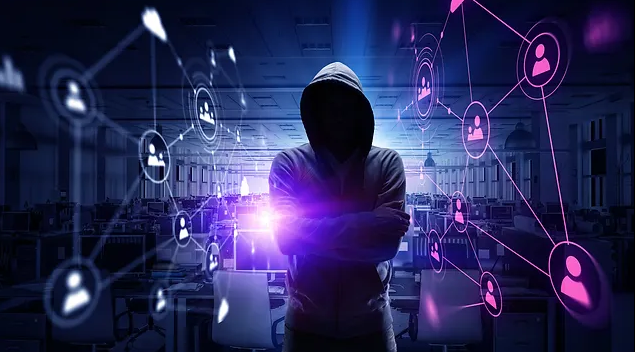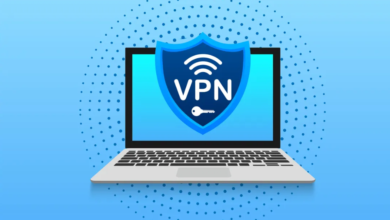
The Evolution of Cyber Threats: From Simple Viruses to Advanced Persistent Threats
In the digital age, cybersecurity has become one of the most critical aspects of our interconnected world. What began as simple pranks by early hackers has evolved into a complex and ever-evolving battleground between malicious actors and cybersecurity professionals. The journey from the first computer viruses to today’s advanced persistent threats (APTs) tells a story of technological innovation, increasing sophistication, and the growing importance of cybersecurity.
Understanding the evolution of cyber threats is essential not only for cybersecurity professionals but also for individuals and organizations that rely on digital technologies. By exploring this history, we gain insights into how cyber threats have developed over time, what drives them, and how we can better protect ourselves against future risks.
The Early Days: Simple Viruses and Worms
The Birth of Computer Viruses
The first known computer virus, called “Creeper,” was created in the early 1970s as an experiment on ARPANET, the precursor to the modern internet. This self-replicating program was not malicious; it merely displayed the message, “I’m the creeper: catch me if you can.” However, it marked the beginning of a new era in which software could autonomously spread from one computer to another.
By the 1980s, computer viruses had started to gain notoriety. The “Elk Cloner” virus, created in 1982, was one of the first to spread outside of its creator’s control. It infected Apple II computers through floppy disks, a primary method of data transfer at the time. Although it was more of a nuisance than a threat, it demonstrated the potential for widespread disruption.
Worms: A New Form of Threat
In 1988, the Morris Worm became the first widely recognized worm to spread across the internet. Unlike viruses, worms do not require a host program to spread; they can replicate and distribute themselves independently. The Morris Worm infected thousands of computers, causing significant disruptions and leading to the first-ever conviction under the Computer Fraud and Abuse Act in the United States.
These early viruses and worms were relatively simple, often created by curious programmers or pranksters. Their impact was limited compared to modern threats, but they laid the groundwork for more dangerous and sophisticated cyberattacks.
Also Read
The Rise of Malware: Trojans, Spyware, and Ransomware
Trojans: Disguising Malice
As the internet expanded in the 1990s, so did the variety and complexity of cyber threats. Trojans, named after the legendary Trojan Horse, emerged as a particularly deceptive form of malware. Trojans masquerade as legitimate software or files, tricking users into downloading and executing them. Once activated, they can perform a range of malicious activities, such as stealing data, creating backdoors, or launching further attacks.
One of the most notorious examples was the “Sub7” Trojan, which allowed attackers to gain remote control of infected systems. Unlike viruses and worms, which were primarily designed to spread, Trojans focused on stealth and control, signaling a shift towards more targeted attacks.
Spyware: The Age of Surveillance
The late 1990s and early 2000s saw the rise of spyware, software designed to secretly monitor and collect information from users. Often bundled with free software downloads, spyware could track browsing habits, steal personal information, and even log keystrokes. This era also witnessed the growth of adware, a less malicious but equally intrusive form of software that bombarded users with unwanted advertisements.
Spyware marked a turning point in cyber threats, highlighting the increasing value of personal data. As the internet became more commercialized, attackers realized they could profit from the vast amounts of information users were unwittingly sharing online.
Ransomware: Holding Data Hostage
Ransomware, a type of malware that encrypts victims’ data and demands payment for its release, emerged as a significant threat in the mid-2000s. Early examples like the “AIDS Trojan” in 1989 were crude, relying on users to mail ransom payments to the attackers. However, the advent of cryptocurrency in the 2010s enabled ransomware to become a lucrative business model for cybercriminals.
One of the most devastating ransomware attacks was “WannaCry” in 2017, which spread rapidly across the globe, affecting hundreds of thousands of computers in over 150 countries. This attack exploited a vulnerability in Windows operating systems, and its impact underscored the growing threat of ransomware to both individuals and organizations.
The Era of Advanced Persistent Threats (APTs)
What Are APTs?
As cybersecurity defenses improved, attackers began to develop more sophisticated methods to bypass them. This led to the rise of Advanced Persistent Threats (APTs), which are characterized by their stealth, persistence, and ability to evade detection. Unlike traditional cyberattacks, which are often opportunistic and short-lived, APTs involve prolonged campaigns, sometimes lasting months or even years.
APTs are usually state-sponsored or backed by well-funded organizations with specific strategic goals. They often target critical infrastructure, government agencies, and large corporations. The goal of an APT is not just to disrupt operations or steal data, but to maintain ongoing access to the target system for intelligence gathering or sabotage.
Notable APT Incidents
One of the most infamous APTs is “Stuxnet,” discovered in 2010. This highly sophisticated worm was designed to sabotage Iran’s nuclear program by targeting industrial control systems. Stuxnet was a game-changer, demonstrating the potential for cyberattacks to cause physical damage and highlighting the blurred lines between cyber warfare and traditional warfare.
Another significant APT campaign is “APT1,” attributed to a Chinese military unit. Between 2006 and 2013, APT1 conducted extensive cyber espionage against a wide range of industries, stealing intellectual property and sensitive information from hundreds of organizations worldwide. The APT1 report, published by the cybersecurity firm Mandiant in 2013, was one of the first to publicly link a cyber espionage campaign to a nation-state.
The Impact of APTs
The emergence of APTs has fundamentally changed the landscape of cybersecurity. Traditional defenses such as firewalls and antivirus software are often insufficient against these advanced threats. Organizations must now adopt a multi-layered approach to security, including advanced threat detection, continuous monitoring, and incident response capabilities.
APTs have also led to increased collaboration between the public and private sectors, as well as between nations. Cybersecurity has become a critical component of national security, and the fight against APTs often involves cooperation across borders and industries.
The Future of Cyber Threats
As technology continues to evolve, so too will cyber threats. The rise of artificial intelligence (AI) and machine learning presents both new opportunities and new risks. On one hand, AI can be used to enhance cybersecurity defenses by detecting and responding to threats more quickly. On the other hand, attackers can also use AI to develop more sophisticated and automated attacks.
The increasing interconnectivity of devices through the Internet of Things (IoT) also presents new challenges. As more devices become connected to the internet, the potential attack surface for cybercriminals expands. Protecting these devices, many of which have limited security features, will be a significant challenge in the years to come.
Moreover, as geopolitical tensions continue to rise, we may see an increase in state-sponsored cyberattacks and cyber warfare. The cyber domain has become a new battlefield, and the consequences of cyberattacks can be just as severe as traditional military actions.
The evolution of cyber threats from simple viruses to advanced persistent threats reflects the broader changes in our digital world. What started as harmless pranks has grown into a global challenge that affects governments, businesses, and individuals alike. As we look to the future, the need for robust cybersecurity measures has never been greater.



